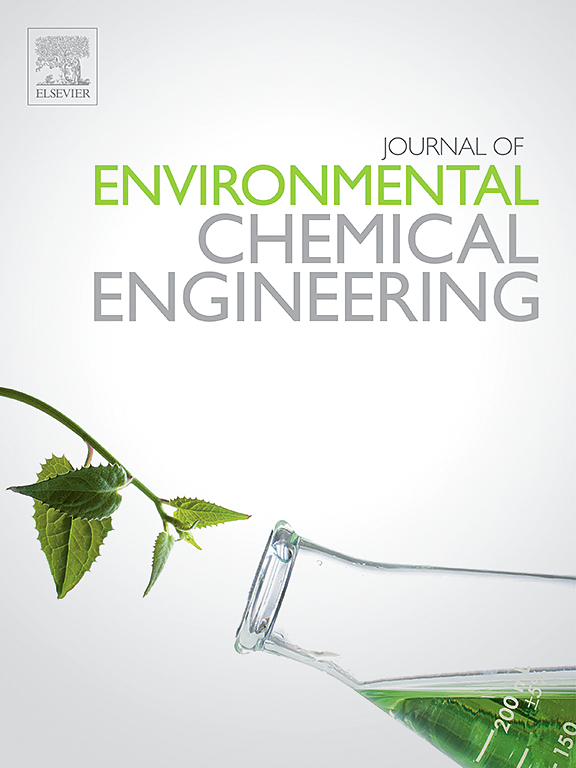酰基硫脲衍生物:化学传感和重金属修复的多功能工具
IF 7.4
2区 工程技术
Q1 ENGINEERING, CHEMICAL
引用次数: 0
摘要
日益严重的环境污染,尤其是重金属和有害阴离子的污染,对全球健康和生态系统构成了重大威胁。这些化合物具有独特的结构特征,包括多个配位位点、增强的电子密度、有利的立体效应以及稳定的金属配体复合物,因此能够有效地应用于化学传感和重金属修复领域。作为化学传感器,酰基硫脲衍生物在检测各种阳离子、阴离子和中性物质时表现出高灵敏度和高选择性,使其成为现场环境分析的重要工具。此外,它们还能有效吸附 Cu2+、Hg2+、Cd2+、U4+、Pb2+、Pt4+ 和 Pd2+ 等重金属,并能去除酸性废水中的 Cl-,这表明它们在治理重金属污染方面具有重要的实际意义。这项研究强调了酰基硫脲衍生物作为解决环境污染这一关键问题的多功能工具的创新用途,通过提供利用酰基硫脲检测和修复环境污染物的有效方法,促进了环境科学和技术的进步。本文章由计算机程序翻译,如有差异,请以英文原文为准。
Acyl thiourea derivatives: Versatile tools for chemosensing and heavy metal remediation
The increasing environmental pollution, particularly from heavy metals and hazardous anions, poses a significant threat to global health and ecosystems. The unique structural features of these compounds, including multiple coordination sites, enhanced electron density, favorable steric effects, and stabilized metal-ligand complexes, enable their effective application in both chemosensing and heavy metal remediation. As chemosensors, acyl thiourea derivatives exhibit high sensitivity and selectivity in detecting various cations, anions, and neutral species, making them valuable tools for in situ environmental analysis. Additionally, their ability to efficiently adsorb heavy metals like Cu2+, Hg2+, Cd2+, U4+, Pb2+, Pt4+, and Pd2+, along with the removal of Cl− from acidic wastewater, demonstrates their practical significance in combating heavy metal pollution. This study highlights the innovative use of acyl thiourea derivatives as versatile tools for addressing the critical issue of environmental pollution, contributing to the advancement of environmental science and technology by offering effective methods for the detection and remediation of environmental pollutants using acyl thioureas.
求助全文
通过发布文献求助,成功后即可免费获取论文全文。
去求助
来源期刊

Journal of Environmental Chemical Engineering
Environmental Science-Pollution
CiteScore
11.40
自引率
6.50%
发文量
2017
审稿时长
27 days
期刊介绍:
The Journal of Environmental Chemical Engineering (JECE) serves as a platform for the dissemination of original and innovative research focusing on the advancement of environmentally-friendly, sustainable technologies. JECE emphasizes the transition towards a carbon-neutral circular economy and a self-sufficient bio-based economy. Topics covered include soil, water, wastewater, and air decontamination; pollution monitoring, prevention, and control; advanced analytics, sensors, impact and risk assessment methodologies in environmental chemical engineering; resource recovery (water, nutrients, materials, energy); industrial ecology; valorization of waste streams; waste management (including e-waste); climate-water-energy-food nexus; novel materials for environmental, chemical, and energy applications; sustainability and environmental safety; water digitalization, water data science, and machine learning; process integration and intensification; recent developments in green chemistry for synthesis, catalysis, and energy; and original research on contaminants of emerging concern, persistent chemicals, and priority substances, including microplastics, nanoplastics, nanomaterials, micropollutants, antimicrobial resistance genes, and emerging pathogens (viruses, bacteria, parasites) of environmental significance.
 求助内容:
求助内容: 应助结果提醒方式:
应助结果提醒方式:


